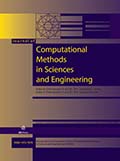Authors: Wu, Xingping | Yuan, Qiheng | Zhou, Chunlei | Chen, Xiang | Xuan, Donghai | Song, Jinwei
Article Type:
Research Article
Abstract:
In the field of electric carbon, the mapping relationship between carbon emission flow calculation and power flow calculation was studied by combining techniques such as current trajectory tracking, carbon flow trajectory analysis, power system flow calculation methods, and electric network analysis theory. By delving into the mechanism between these two factors, a better understanding of the correlation between them can be achieved. In addition, by using time series data, graph attention neural networks (GNN), distributed computing technology, and spatiotemporal computing engines, carbon emission fluctuations can be decomposed and a high-frequency “energy-electricity-carbon” integrated dynamic emission factor can be achieved. Through the
…spatiotemporal distribution patterns of this dynamic factor in multiple dimensions, the carbon emissions from key industries in cities can be accurately calculated. In this paper, the LSTM-GAT model is used as the core to construct a key carbon emission prediction model for cities. The study focuses on the power plant, chemical industry, steel, transportation industry, and construction industry, which are high energy-consuming industries with an annual electricity consumption of more than 100 million kWh in a major city of China. By analyzing the entire life cycle from power generation to electricity consumption and conducting current flow analysis, monthly, weekly, and daily carbon emission calculations were performed. Additionally, other factors such as the industrial development index, GDP, coverage area of power generation enterprises, regional population, size, and type of power-consuming units were included in the comprehensive calculation to build a measurement system. By conducting experiments and analyzing historical data, we have found that the LSTM-GAT model outperforms the single models of GCN, GAT, LSTM, GRU, and RNN in terms of lower error values and higher accuracy. The LSTM-GAT model is better suited for predicting carbon emissions and related indicators with an accuracy rate of 89.5%. Our predictions show that the carbon emissions will exhibit a slow growth trend in the future, while the carbon emission intensity will decrease. This information can provide a scientific basis for government decision-making.
Show more
Keywords: Electric carbon, dynamic emission factor, LSTM-GAT, predict carbon emissions
DOI: 10.3233/JCM-247139
Citation: Journal of Computational Methods in Sciences and Engineering,
vol. 24, no. 3, pp. 1405-1421, 2024
Price: EUR 27.50





